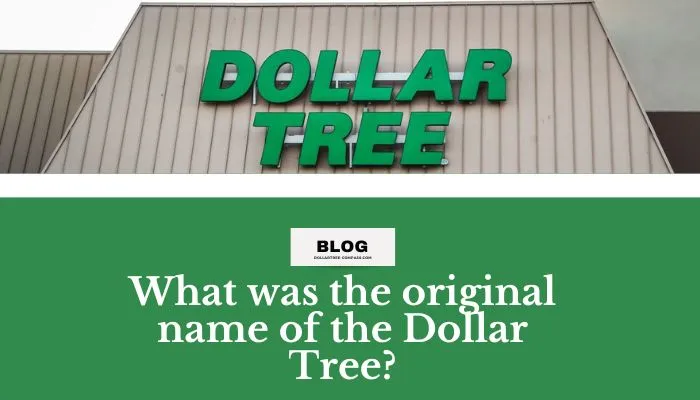Aisles brimming with vibrant party materials, household staples for cleaning, seasonal décor, and an unexpected assortment of goodies await you at a Dollar Tree today—all priced at a tantalizing one dollar.
However, this massive retailer, renowned for its affordable treasures and treasure hunt ambiance, wasn’t always such a bargain giant. Let’s explore the intriguing origins of Dollar Tree, a tale that begins with a nickel and a dime rather than a dollar.

Diminished Hopes: The Emergence of the Five and Dime
In the United States, a novel retail idea called the five and dime emerged in the late 19th and early 20th centuries. These shops transformed working-class shopping by offering a wide range of novelty products and basic necessities for five or ten cents each. They established the foundation for the future giants of discount retail by providing a one-stop shop for families looking for convenience and value.
A Penny Saved is a Penny Earned: The Story of the Creation of a Visionary Dollar Store
Time travel to the 1950s, a period marked by post-war economic expansion and the rise of the middle class. Let me introduce you to K.R. Perry, a businessman who believes in the power of affordability and has a sharp eye for opportunity. Perry had an idea for a different sort of shopping experience—a store where everything, everything, would be priced at a single, set price point—inspired by the success of the five and dime shops. This ground-breaking concept, which was unheard of at the time, would go on to build a retail empire.
The Origin of “Only $1.00”: The Establishment of a Dollar Store
Perry’s dream came true in 1953 when the first shop opened, which wasn’t a Dollar Tree but rather a business with the clear label “Only $1.00.” The original $1 Tree sought to provide a carefully chosen assortment of daily essentials, ranging from kitchenware to cleaning supplies, at the astoundingly low cost of only one $1. At first, the idea was viewed with suspicion. Could a business really sell so many different things for such little money and yet make a profit?
Difficulties and Successes: The Initial Years of “Only $1.00”
“Only $1.00″‘s first years were a baptism by fire. Finding high-quality goods in a dollar price range was a never-ending challenge. The shop also struggled to explain to consumers what a single-price store really is. Perry and his group persisted, nevertheless. They established trusting connections with suppliers, struck advantageous bulk agreements, and concentrated on providing a wide range of products that appealed to their target market, which consisted of families on a tight budget. “Only $1.00” gained momentum gradually and became known in its local communities as a dependable supplier of reasonably priced necessities.
The Journey to Dollar Tree: The Birth of a Brand
It became clear that the “Only $1.00” idea needed a more distinctive and expressive brand name as it gained popularity. Even though the name “Only $1.00” was obvious, it lacked the catchy appeal that would have helped the brand succeed. The decision to rename the businesses as Dollar Tree was taken after much thought and market analysis. This name provided a more lighthearted and accessible vibe, while also perfectly capturing the company’s primary value proposition: everything for a dollar.
Growing Pains: Managing the Brand Transition
The move from “Only $1.00” to Dollar Tree wasn’t without its challenges. The following are some difficulties the business faced:
- Brand Recognition: “Only $1.00” was an unambiguous moniker that prevented any misunderstandings. Despite its distinctive name, Dollar Tree had to establish its reputation from the ground up.
- Customer Confusion: The name change may have caused some trepidation in the eyes of some devoted customers who weren’t sure whether it meant a change in the company’s essential values.
- Marketing Efforts: In order to inform customers and establish Dollar Tree in the market, a smart marketing strategy was required to launch a new brand name.
- Paying Attention to the Dollar: Resolving Client Issues
Dollar Tree responded proactively to these issues by:
- Transparency: The business stressed that its basic principle of doing everything for a dollar had not altered.
- Marketing Blitz: To ensure brand consistency and emphasize the advantages of the new name, Dollar Tree began a focused marketing effort.
- Customer contact: To address customer concerns and respond to inquiries about the rebranding, open lines of contact were set up.
A Go Back to Basics: The Name Dollar Tree Is Unquestionably Supreme
It’s interesting to note that the firm didn’t start off with the Dollar Tree brand. The business made the decision to rename once again in the late 1960s, choosing the more generic moniker “K.R. Variety.” But this transfer turned out to be a temporary one. Here’s the rationale behind Dollar Tree’s rebranding:
- Brand Equity: Under the “Dollar Tree” moniker, Dollar Tree has already achieved a high level of consumer loyalty and brand awareness.
- Customer Preference: Customers largely favored the Dollar Tree name’s clarity and simplicity, according to market research.
- Strength in Simplicity: Dollar Tree realized that the original moniker did a good job of conveying the brand’s main selling point.
The choice to go back to Dollar Tree worked out well. The well-known brand connected with current clients, and the business saw substantial development in the next years.
Dollar Tree: A Superpower in Retail Today
In the current era of inexpensive retail, Dollar Tree is a giant in the industry. An overview of the company’s present state is provided below:
- Head of the Market: With a huge network of locations throughout North America, Dollar Tree is without a doubt the industry leader in single-price-point retail.
- Dollar Tree has implemented a persistent growth strategy by deliberately building shops in underprivileged areas and taking advantage of the rising demand for reasonably priced items.
- Changing with the Times: Dollar Tree has shown the capacity to adjust to changing customer trends by providing fashionable and seasonal goods alongside its core products, all the while adhering to its fundamental value promise.
The Dollar’s Legacy: An Evolutionary Branding Lesson
The transformation of Dollar Tree from a “Only $1.00” store to a retail behemoth provides insightful insights for companies of all sizes.
- The Influence of Branding: Although a well-known brand may be quite beneficial, it is important to pay attention to industry developments and client feedback.
- Flexibility Is Essential: The retail industry is always changing, and businesses who can modify their approaches without compromising their essential principles tend to be the most successful.
- Enduring Customer Value: The success of Dollar Tree is evidence of the long-lasting allure of providing high-quality goods at reasonable costs.
Recalling that even a cent and a penny may grow into a dollar shop empire is the lesson of the Dollar Tree narrative. The brand has solidified its position in the hearts (and wallets) of cost-conscious consumers worldwide with its constant dedication to affordability and flexibility.

Hi, I’m Donette Howington, your committed Customer Support Specialist for the DollarTree-Compass platform. Currently serving as an Assistant Store Manager at Dollar Tree, my 3+ years of experience ensure I can assist and guide you, ensuring a seamless experience.
Contents
- Diminished Hopes: The Emergence of the Five and Dime
- The Origin of “Only $1.00”: The Establishment of a Dollar Store
- The Journey to Dollar Tree: The Birth of a Brand
- Growing Pains: Managing the Brand Transition
- A Go Back to Basics: The Name Dollar Tree Is Unquestionably Supreme
- Dollar Tree: A Superpower in Retail Today
- The Dollar’s Legacy: An Evolutionary Branding Lesson